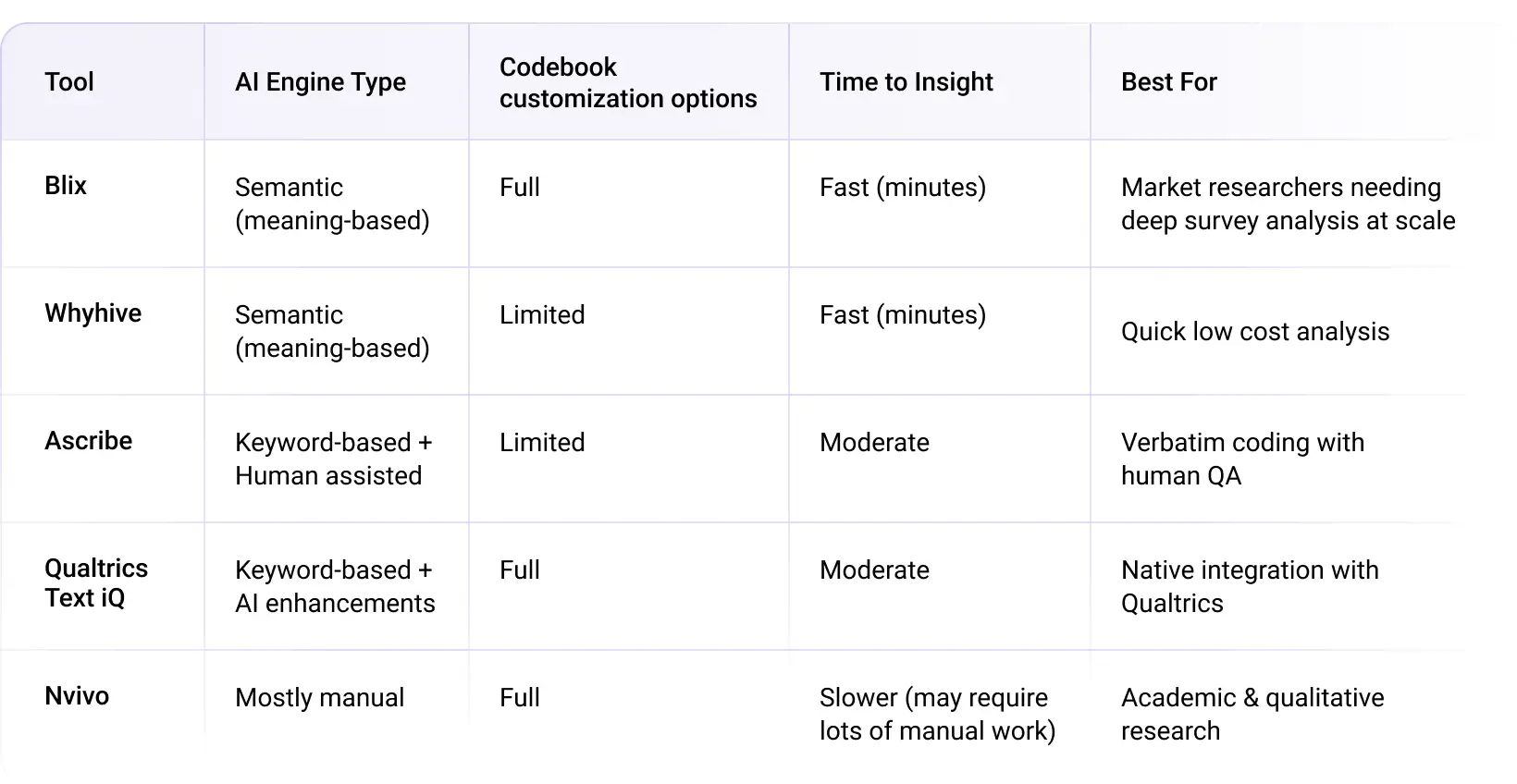What Is Text Analytics in Market Research?4 Steps to Start Social Listening Today
Text analytics is the process of analyzing unstructured text data to uncover patterns, themes, and sentiments.
For market researchers, it means turning open-ended feedback into measurable, quantitative data that can be quantified, segmented and measured over time, to support meaningful business insights.
Common components include:
- Thematic Analysis: Grouping similar responses to find recurring themes.
- Verbatim Coding: Manually or automatically categorizing individual open text responses into themes, to generate quantitative data.
- Sentiment Analysis: Identifying the emotional tone behind words, positive, negative, or neutral.
You’re now working with open-ended responses, social media comments, product reviews, chat interactions, and transcripts from interviews and focus groups—a massive volume of unstructured data.
AI has made it possible and scalable to digest all of this qualitative feedback.
But why should you collect open-ended feedback to begin with?
Why is Text Analytics important?
Closed-ended questions tell you what happened. Text analytics helps you understand why.
Analyzing open-ended feedback provides richer context that structured questions often miss. With the right tools, researchers can move beyond surface-level metrics to uncover the deeper story.
Text analytics of open-ended data enables:
- Deeper insights – Understand the motivations, emotions, and context behind responses.
- Discovery of the unknown – Identify issues or needs that weren’t asked about directly.
- Multi-channel analysis – Combine data from surveys, reviews, social media, and more.
- Scalability – Process thousands of responses in minutes using Blix.
As AI-powered probing and unstructured feedback become more common, text analytics is no longer optional, it's essential for understanding customer experience at scale.
Text Analytics Methods in Market Research
The right text analytics methods help market researchers uncover hidden patterns, segment customer insights, and tell compelling stories from messy, unstructured feedback.
Here’s a glossary of essential methods and terms every researcher should know:
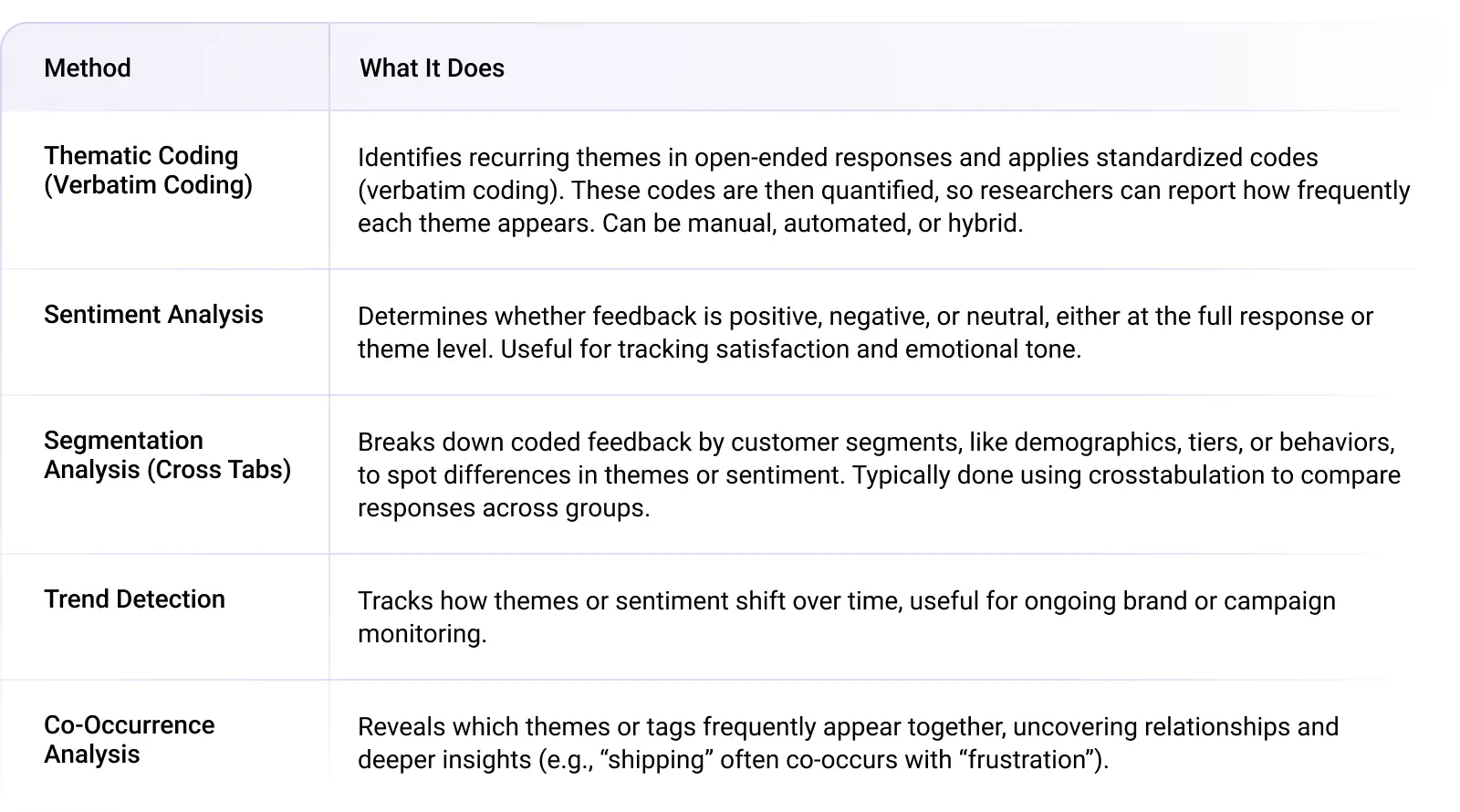
Let’s look at how these methods were applied in a project, helping a wellness brand turn unstructured feedback into action.
Case Study: How a Wellness Brand Used Text Analytics to Cut Churn by 15%
Elena, a senior analyst at a market research consultancy, was brought in to help a wellness subscription brand struggling with increasing churn.
The team had collected open-ended feedback from exit surveys, but it had never been analyzed, buried in a spreadsheet with no clear path forward.
Using Blix, Elena began by applying verbatim coding to structure the qualitative data. Recurring themes quickly emerged: while many mentioned product quality, a significant number flagged issues with delivery and packaging, concerns the client had previously overlooked.
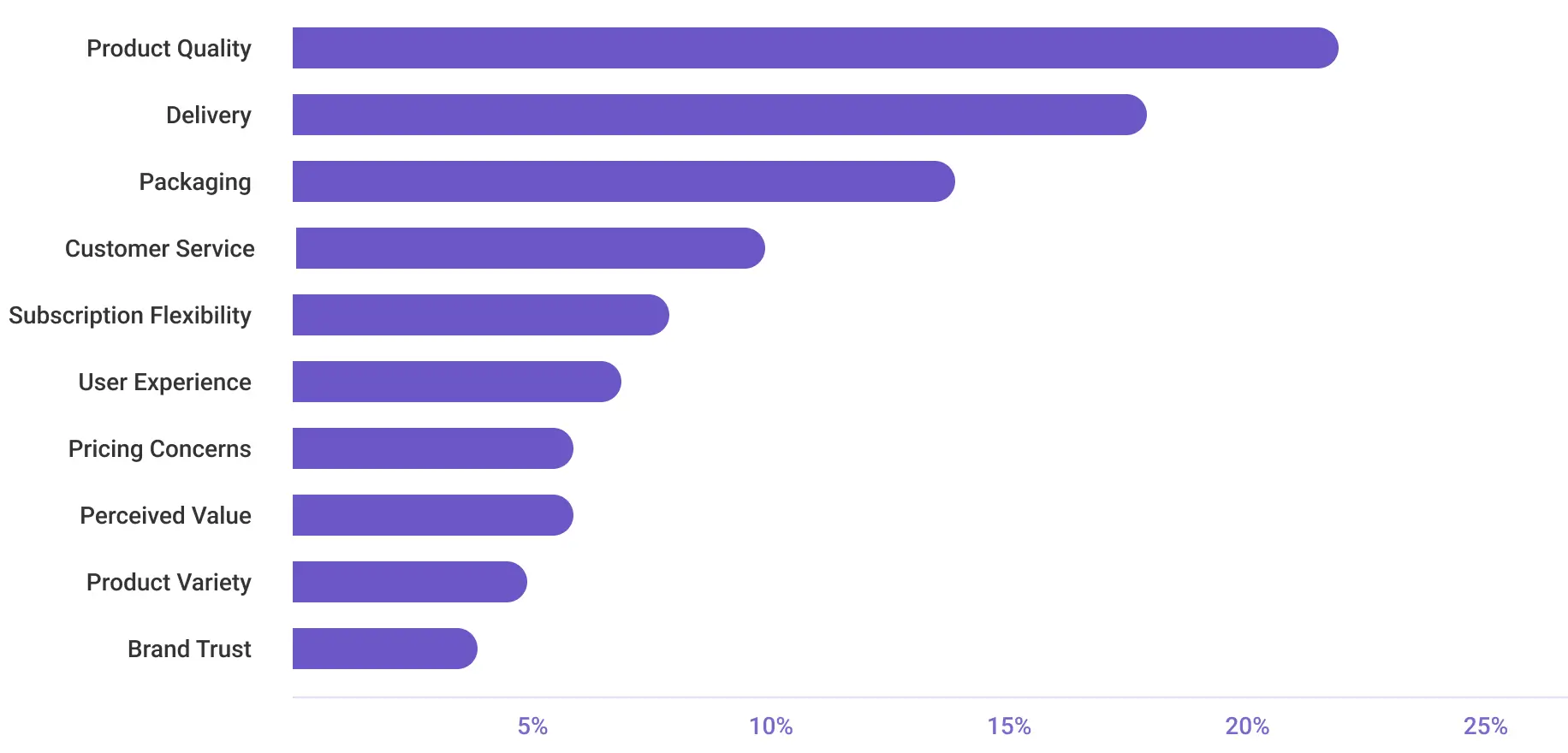
To prioritize action, she quantified the frequency of each theme and layered in sentiment analysis to evaluate tone. Product-related comments were mostly positive, but feedback tied to delivery and the unboxing experience skewed sharply negative.
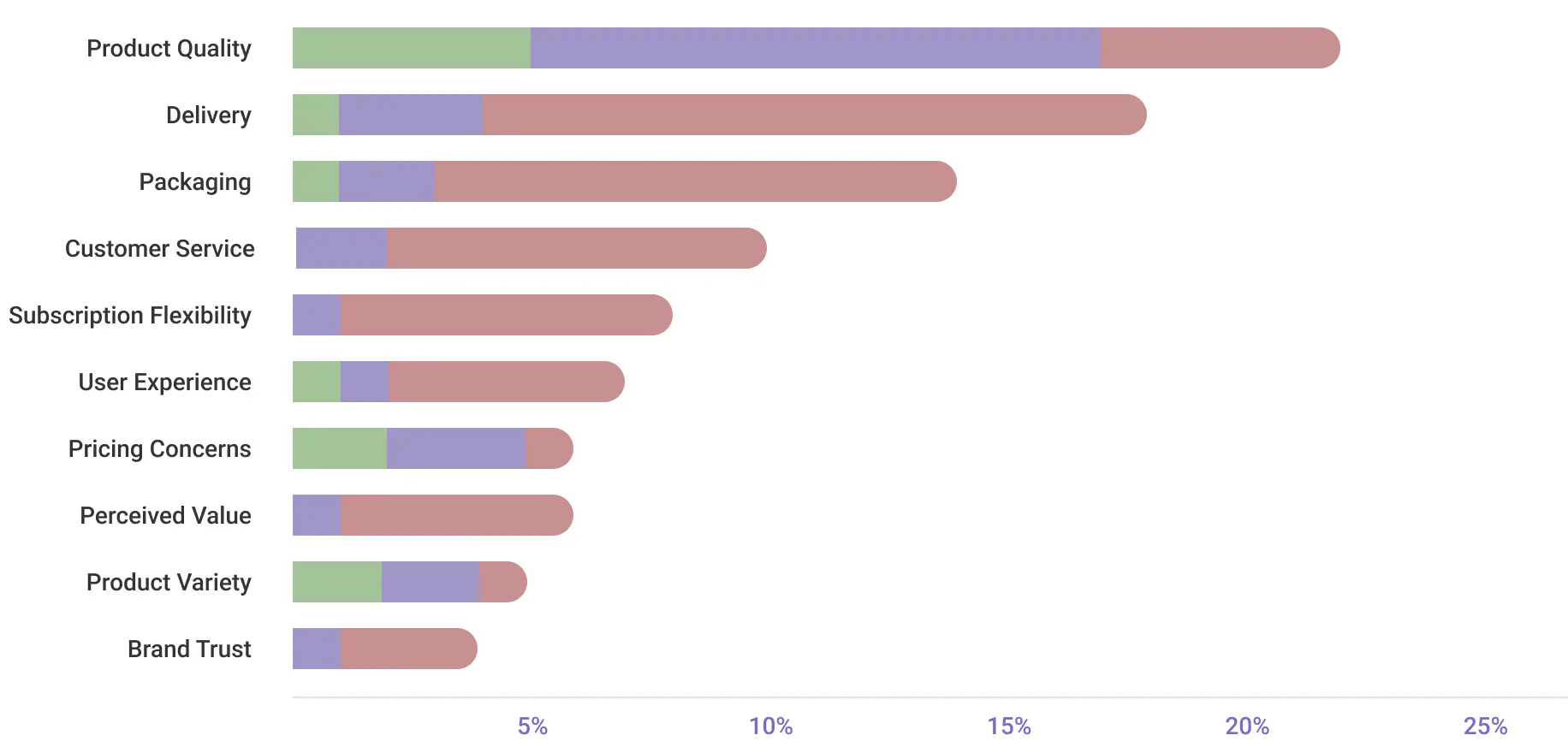
Curious whether these concerns varied across customer types, Elena ran a segmentation analysis by subscription tier. She found that premium-tier customers, the brand’s most valuable segment, were both more vocal and more dissatisfied, particularly about delays and packaging presentation.
Finally, she reviewed feedback trends over the past six months. Mentions of delivery issues had steadily increased, confirming that the problem was growing, not isolated.
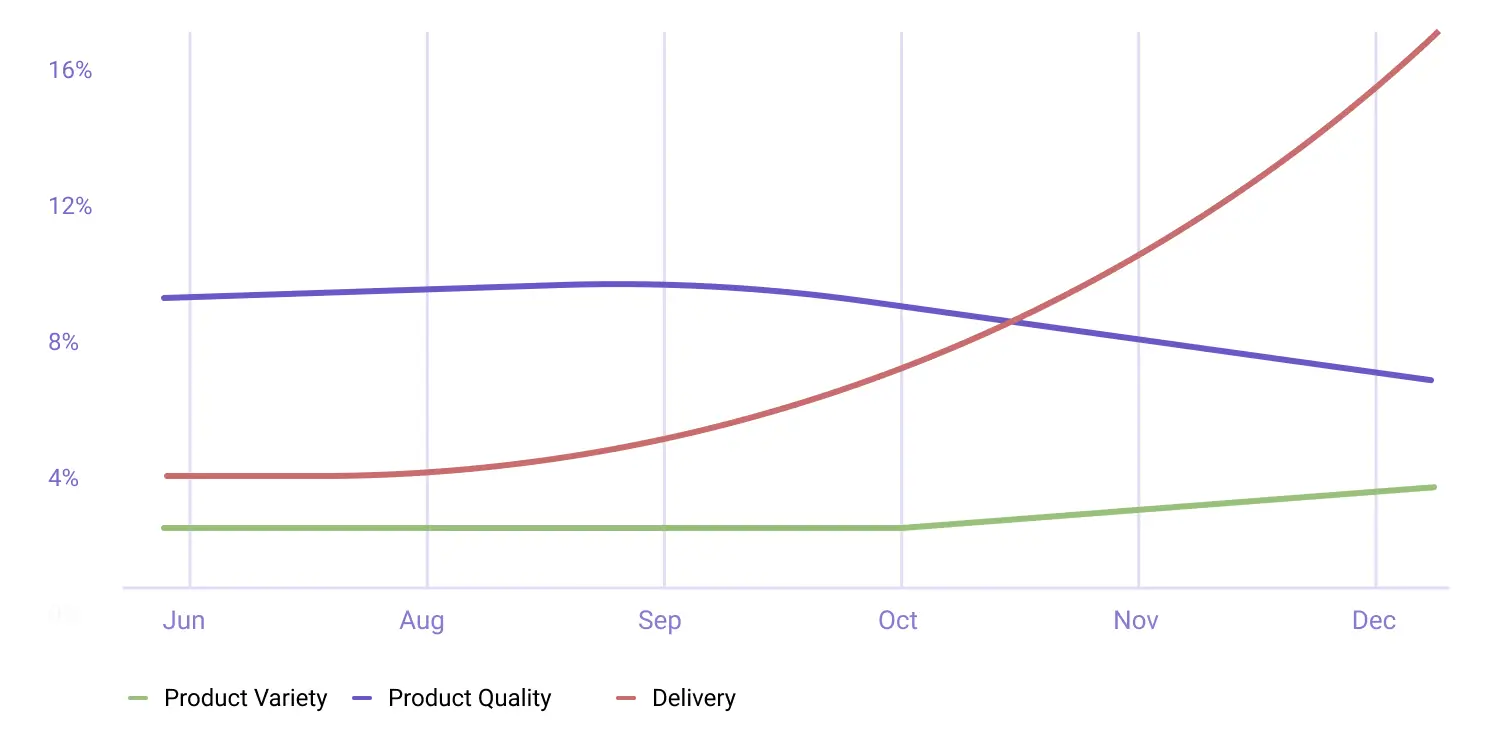
Elena summarized the findings in a clear, visual report and presentation using Blix, enabling the client to see exactly what was driving dissatisfaction, and where to act.
The Result
The company quickly upgraded its packaging and switched logistics providers. Within one quarter, churn dropped by 15%, a direct result of surfacing and acting on insights hidden in unstructured feedback.
So how can that be done in practice?
A 5-Step Text Analytics Pipeline for Market Researchers
If you want reliable, scalable insights from unstructured feedback, you need a process.
This 5-step pipeline shows how market researchers can go from messy text to actionable strategy, with less guesswork and more confidence.
1. Define Goals & Success Metrics
Before you dive into data, you need clarity on why you’re analyzing text in the first place. What business decision are you trying to inform? What behavior are you trying to understand or change?
Strong text analytics projects start with clear research objectives and measurable success metrics.
Depending on your client or stakeholder, your goal might be to:
- Identify drivers of customer satisfaction or churn
- Measure brand perception or campaign impact
- Prioritize product or service improvements
- Uncover unmet needs or emerging trends
- Refine messaging or positioning based on language patterns
Let’s say your client is a D2C skincare brand.
Your goal might be to “understand which aspects of our product experience—texture, scent, packaging, delivery—drive customer loyalty.”
Here’s a table with some common objectives and possible metrics:
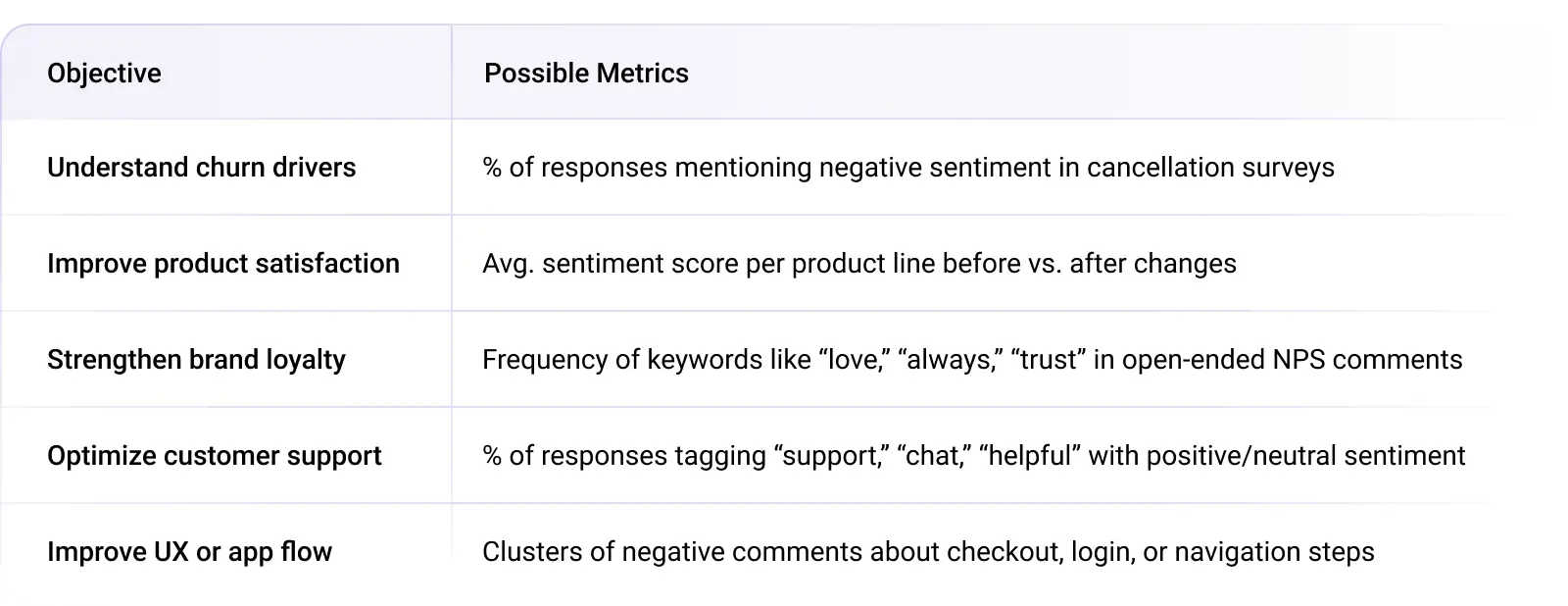
Pro tip: If you’re struggling to define a success metric, ask yourself: “What would I need to show in this data for the client to say ‘Yes, let’s take action’?”
2. Gather & Prep Your Data
Collect all relevant free-text:
- Surveys (CSAT, NPS, brand tracking)
- Product reviews
- Social media mentions
- Support tickets or chat logs
- Interview or video transcripts
Make sure it’s all clean and organized for analysis.
3. Extract Themes & Patterns
With your data prepared, the next step is to uncover the underlying narrative.
Through thematic analysis, researchers can systematically identify the recurring themes and topics that emerge from open-ended feedback.
This can be done manually or enhanced using an AI-powered thematic analysis tool like Blix to accelerate the process from days to minutes and reduce bias.
For example, running thematic analysis on feedback for a wellness subscription brand, like the one in Elena’s case, would likely surface themes such as product quality, delivery experience, and packaging., critical areas that reflect the customer experience and expectations.
4. Categorize Your Text
Now it’s time to bring structure to the chaos.
Categorizing open-ended text (called “verbatim coding”) means assigning themes, labels, or “codes”, to each response so you can quantify volume, track sentiment, and compare across groups.
Here’s what’s involved:
- Verbatim Coding: Tagging each response with relevant themes or categories. This is the traditional gold standard in market research, but it’s also slow, expensive, and difficult to scale manually, which is where AI verbatim analysis software comes in.
- Sentiment analysis: Assigning emotional tone, positive, negative, or neutral, to individual comments or themes.
Since there can be multiple feedback topics in one response, every response can be assigned one or more codes. Each code can hold a different sentiment, so analyzing the overall sentiment is usually not enough. This is called ABSA or Aspect Based Sentiment Analysis.
Let’s say you’re analyzing responses from an exit survey for a wellness subscription brand, like the one in Elena’s case. Here’s a sample comment:
“The supplements were effective, but my last two boxes arrived late and the packaging looked really cheap.”
Manual coding might look like this:
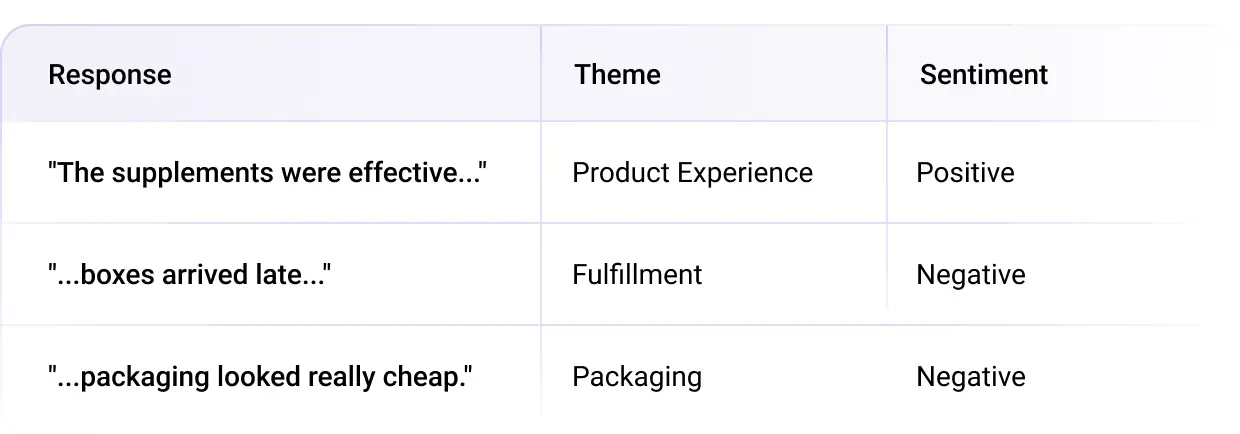
This kind of structured coding helps quantify what matters most to customers and identifies where experience is falling short, exactly what Elena used to uncover and act on recurring pain points.
Now imagine doing that 3,000 more times. That’s where AI text analytics tools like Blix come in to help professional researchers who deal with high volumes of data.
With Blix, you can:
- Automatically extract themes
- Code the data quickly and easily, within seconds
- Customize the themes and coding to fit your client’s brand and requirements
- Analyze sentiment for each topic
- Iterate as many times as needed
The end result? You turn scattered opinions into structured insights you can chart, compare, and act on.
Click here to book a demo with Blix now.
5. Visualize, Report & Act
This is where your analysis becomes actionable. After extracting and coding themes, it’s time to communicate your findings in a way that drives decisions and gets buy-in from stakeholders.
Executives don’t want data, they want answers. Your role as a researcher is to translate text analytics into clear, compelling stories backed by evidence.
This includes insights like:
- Theme frequency charts: Show how often key issues arise
- Sentiment over time: Reveal shifts after product launches or campaigns
- Segmented dashboards: Compare feedback across customer types or regions
- Key quotes and summaries: Humanize insights with impactful verbatim and descriptions
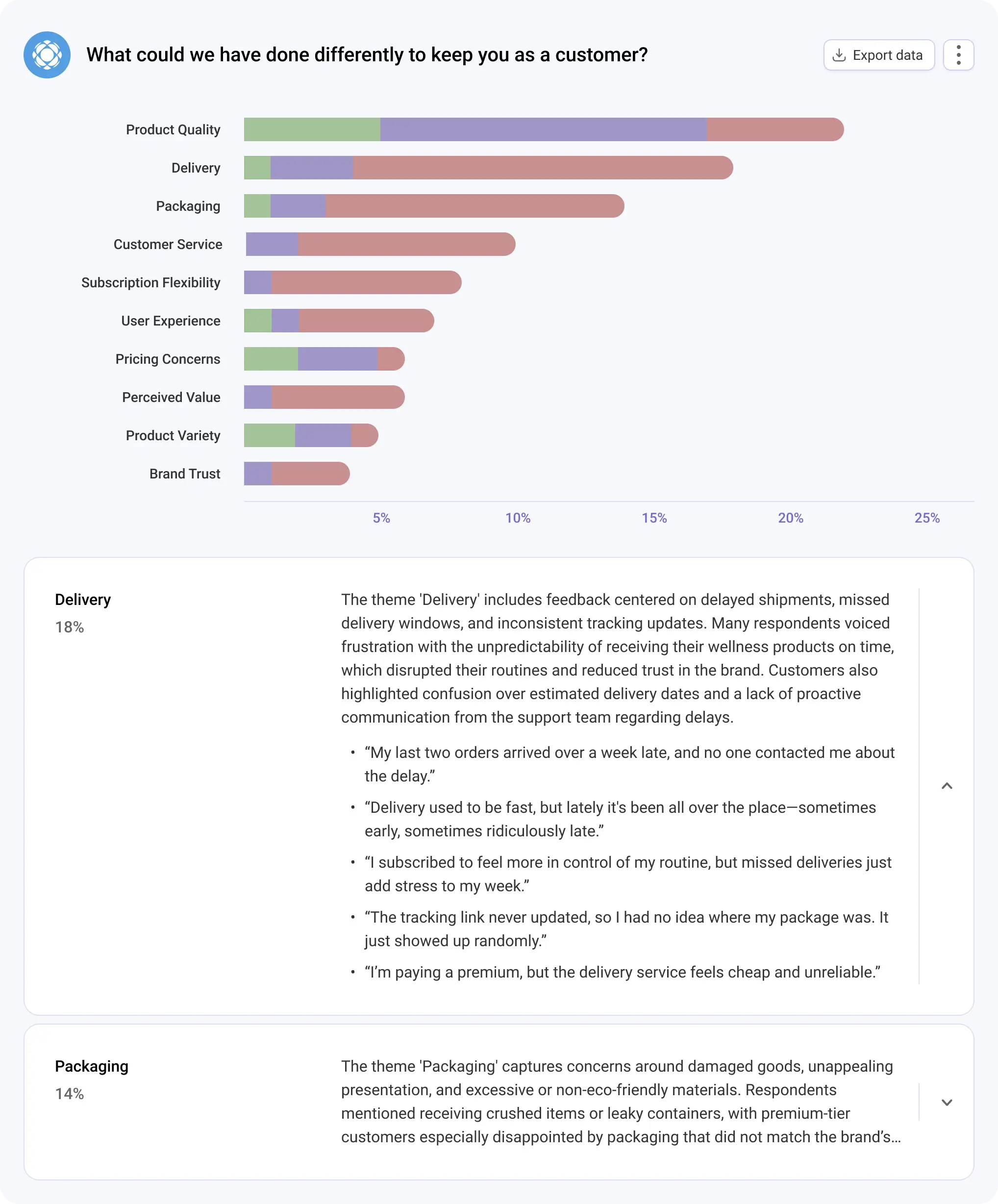
With AI text analytics tools you don’t have to do it manually anymore.
Following are some options you should consider if you are searching for a best in class text analytics software for your market research or insights team.
The Best Text Analytics Tools for Market Researchers
With so many tools offering AI-driven insights, it’s easy to get overwhelmed. The key is finding a platform that balances ease of use, depth of insight, and scalability, without sacrificing quality.
Below is a comparison of some of the most popular text analytics tools used by modern market researchers:
